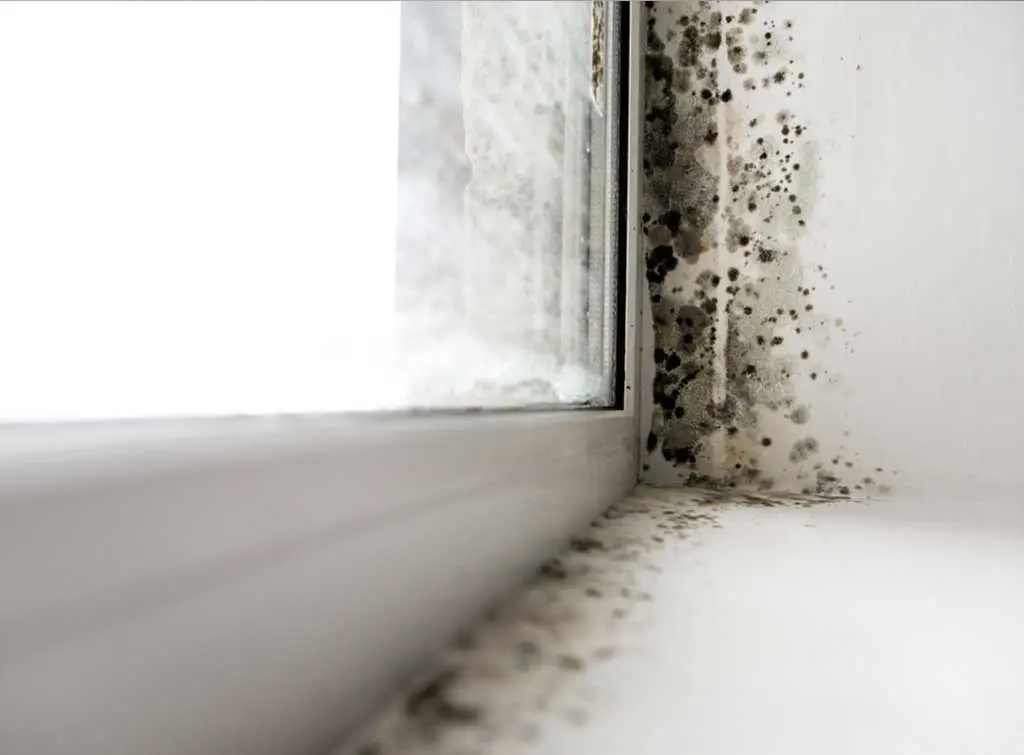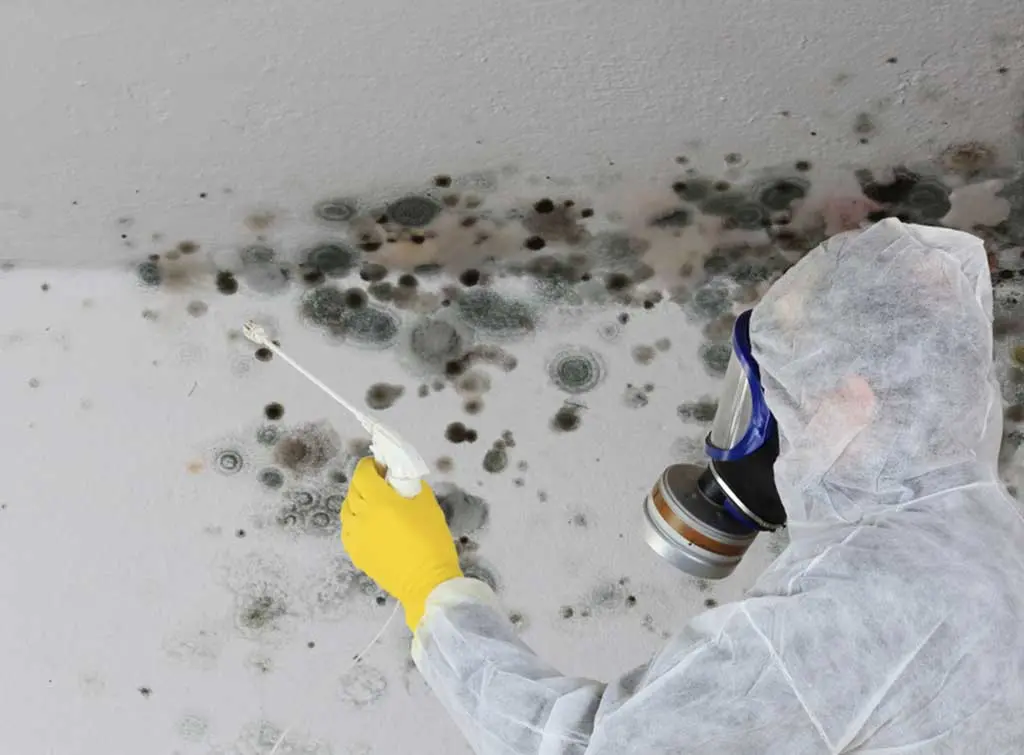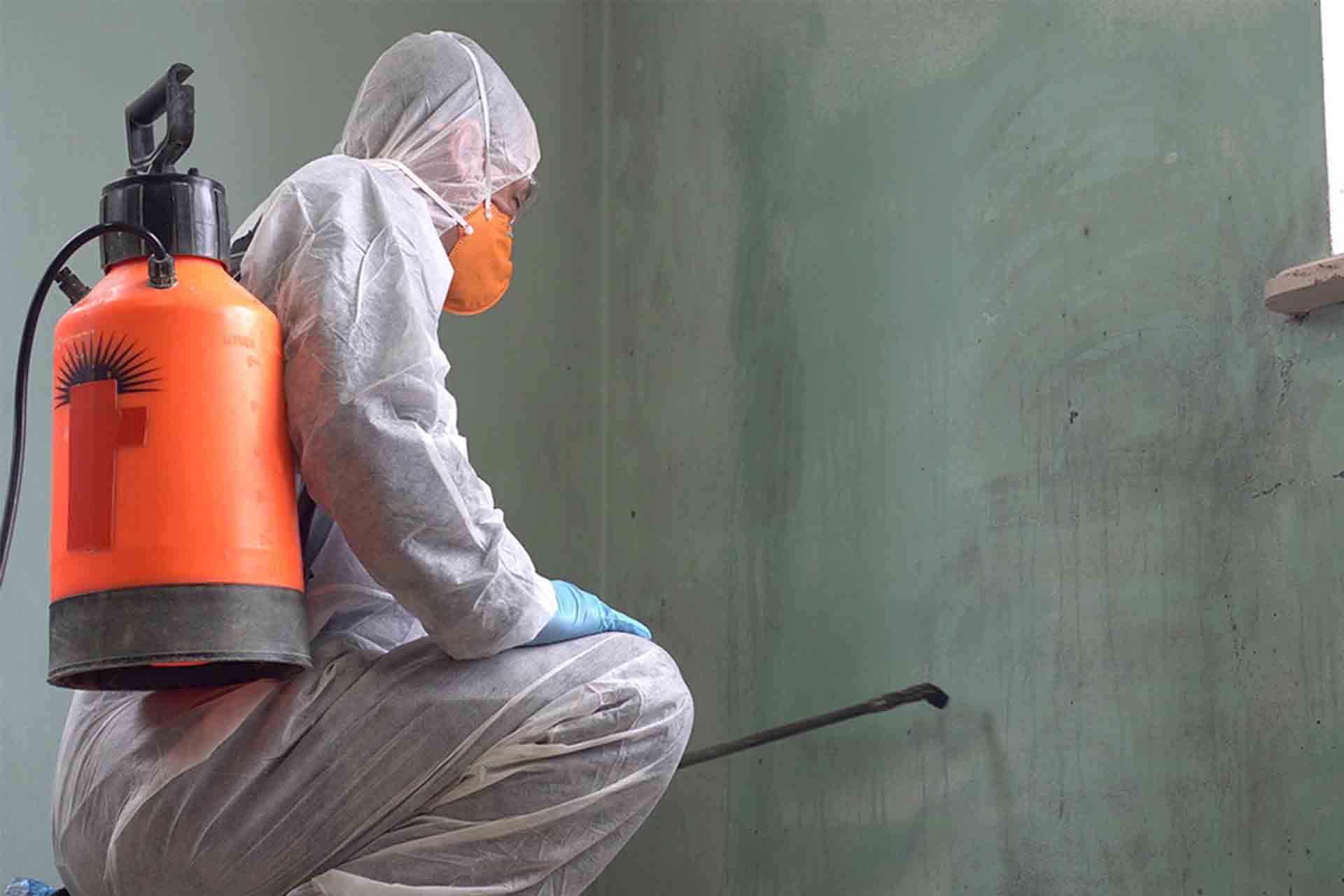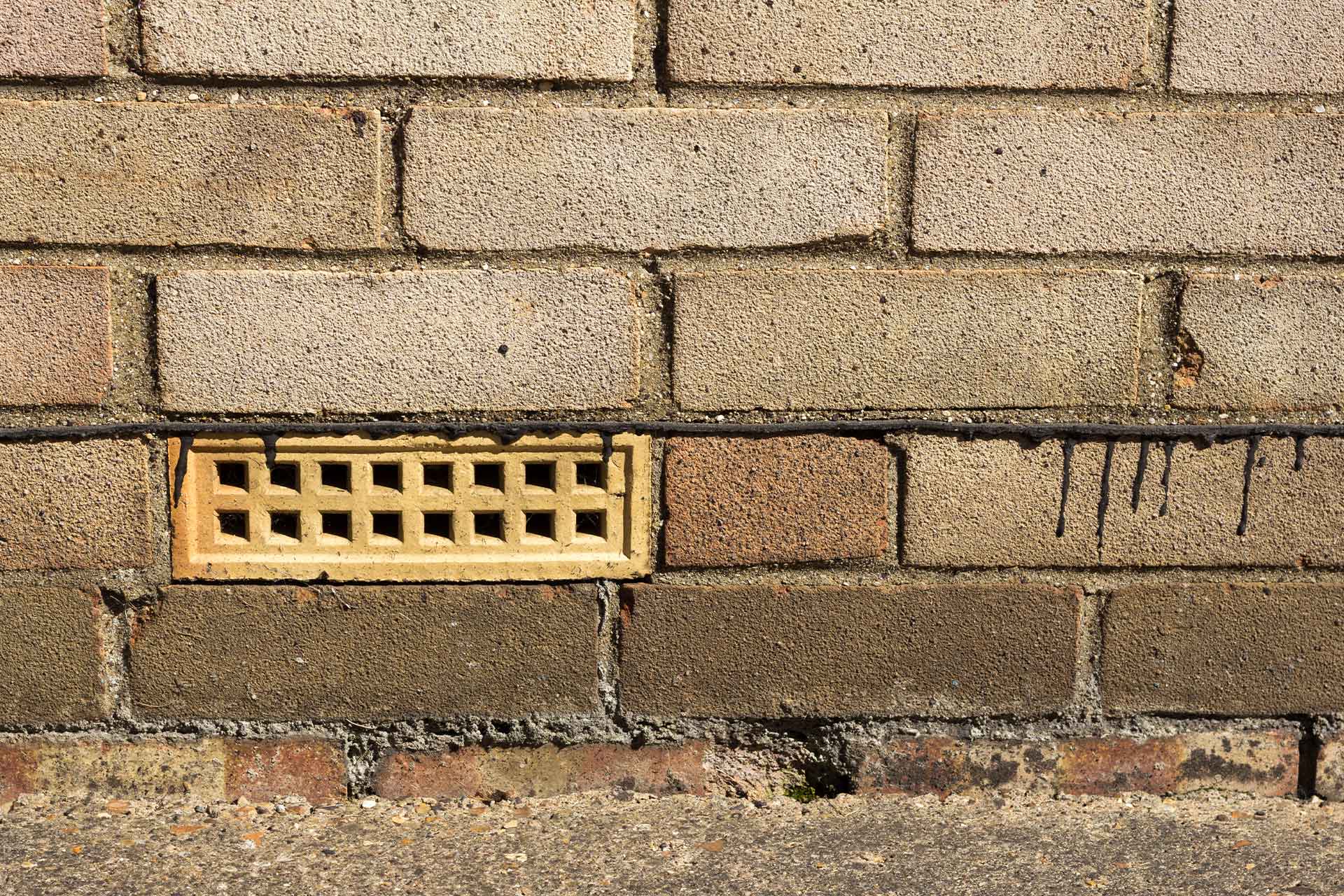Blog>Expert Advice>Mildew vs mould: What's the difference?
Last updated: 4 December 2024
Mildew vs mould: What's the difference?
Discover the difference between mould and mildew, including how to identify both types of fungus and where to find a trusted professional to help treat the issue.

Finding mildew or mould in your home is unpleasant and unsightly. Left untreated, it can damage walls, ceilings, and soft furnishings. An infestation of mildew and mould can also cause health problems.
However, there are distinct differences between mould and mildew - and they shouldn't be treated the same.
So before you start trying to tackle the problem, read on to discover how to identify and treat mildew vs mould.
We can also help you to find and book mould removal experts.
See the tradespeople we've checked and recommend for your job
What is mildew and mould?
Mildew and mould are types of fungus commonly found in enclosed, damp areas of the home, such as bathrooms.
Both start as tiny spores and can grow in winter and summer temperatures. Mould and mildew can appear on damp surfaces within as little as 1 - 2 days.
Put simply, mildew is a particular type of mould that grows flat on surfaces.
You might hear the word 'mould' used to refer to mildew. However, the word 'mildew' can't be used to refer to all types of mould.
First, let's look at some common causes of both:
Condensation: The most common cause of mould and damp, especially in the winter. Once the air cannot hold any more moisture, condensation will form on walls and ceilings
Poor air circulation: Such as in enclosed areas like cupboards, corners and behind furniture that's up against outside walls
Cooking and drying clothes: Both can create condensation and lead to mould and mildew growth
Leaks: Rain seeping through cracks in roofs and gutters or moisture from damaged pipes
Showering: Can create condensation, especially in poorly ventilated bathrooms
Humidity: Warm, humid summer weather can also cause mould and mildew
It's worth remembering that both mould and mildew can damage your home. They can also cause health problems, including respiratory difficulties and skin infections, particularly in young children and the vulnerable.
However, mildew is not as troublesome as other forms of mould, say black mould.
How to get rid of black mould, condensation and damp
Whether it’s due to leaking pipes, excess rainwater, or poor ventilation, there are several reasons that condensation, damp and mould can start to form inside a home.
Key differences between mildew and mould
Now that we've got a better idea of what may be causing mildew and mould, let's take a look at the differences between the two.
Understanding the differences in appearance, location, and health risks is important so you can treat mildew and mould properly and prevent more significant—and costly—issues from arising.
Appearance
Mildew: Grey or white in colour with a dry or powdery texture. May have a foul odour too
Mould: Darker in colour (green, black, red, or even blue) with a fuzzy, raised appearance. May have a strong, musty smell in unaired areas
Location
Mildew: Starts as small dots and grows in an outward pattern on flat, damp surfaces. Often appears on shower walls and window sills but can also grow on plants, paper or cloth
Mould: Can quickly grow inwards and upwards, penetrating deeper into walls, ceilings and wood. Mould can cause significant damage to your property
Health risks
Mildew: Minor respiratory problems like coughing fits but not as dangerous as mould exposure
Mould: More serious health risks such as allergic reactions and asthma attacks. This is caused by allergens and potent toxins from mould growth
People with the greatest health risk from mould exposure are the elderly, very young children and pregnant women. Those with allergies, asthma, underlying lung disease or a weakened immune system are also vulnerable.
See the tradespeople we've checked and recommend for your job
How to identify mould and mildew in your home
Spot the signs of mildew vs mould in your own home with our handy checklists:
Mildew
White/grey discolouration in early stages
Turns brown
Flat and powdery
Small dots
May have a foul smell
Can cause coughs and minor respiratory issues
Mould
Fuzzy, raised appearance
Dark patches of black, green or red
Can penetrate deep into walls and surfaces causing structural damage
Often mistaken for dirt
Musty odour
Produces allergens and toxins that can trigger allergic reactions and asthma attacks

You should always be on the look out for mould and mildew as it's often in hidden areas that you can't see. Before you know it a small patch can spread across an entire wall.
That's why it's better to identify and treat the issue as soon as possible to stop it from spreading and causing damage.
Contact a mould removal expert in your area who can treat the problem.
See the tradespeople we've checked and recommend for your job
Why removing mildew and mould needs different approaches
So once you've identified whether you have mildew vs mould, read below for the steps you need to take.
It's recommended that you wear protective gloves and a mask before you start the cleaning process. For best results, we always recommend hiring a professional.
Removing mildew
Mildew is usually easier to remove than mould.
Try these mildew cleaning tips:
Clean the affected area with a solution of water and bleach and detergent. You can also use a mildew cleaner
Scrub with a disposable brush, sponge or cloth until the mildew is gone
Dispose of all the contaminated PPE and cleaning materials
Removing mould
Larger mould areas might require removal experts to clean and treat the issue.
However, small areas of mould on windows, baths, tiles and sinks can usually be cleaned with disinfectants or bleach and water solutions.
Try these mould removal steps:
Protect yourself with gloves and a mask to prevent inhaling spores
Remove damp or damaged materials such as wet wallpaper and rotted fabrics
Mist with clean water to help stop the spores being released into the air
Clean with detergent, bleach solution or disinfectant using a scrubbing brush or sponge
Change the water frequently and use fresh sponges
Dry the area thoroughly for 48 hours. Use fans and dehumidifiers to help remove moisture
If the mould is larger than 10 square feet you should call a mould removal service for professional help.
See the tradespeople we've checked and recommend for your job
Why you should hire a trusted tradesperson for mould
Mould can be time-consuming and complex to remove, especially in severe cases.
DIY mould removal can also be hard work physically and may involve climbing ladders to reach difficult areas.
Plus, there are potential dangers to breathing in or touching mould if you're unsure of how to do it safely and correctly.
Hiring a mould removal professional is a good idea because:
They can identify the type of mould you have and know how to remove it
They can be certain that all the mould is removed - safely and efficiently
They can help you to understand the cause of the mould to stop it coming back
Mould removal cost guide
Unsightly, unappealing and dangerous, we'll help you eradicate mould and mildew with our informative guide. Reclaim your home and banish mould for good.
How to prevent mildew and mould in your home
Mould and mildew thrive in damp, moist areas with dust, dirt or organic material (such as plants or fabrics) to feed on.
While mildew is a surface fungus that can be cleaned with a disinfectant or mild detergent, mould is often a sign of a larger issue that may require professional treatment.
To help prevent mould and mildew growth, try:
Keeping humidity levels low, between 30 - 50%
Ventilating bathrooms, laundry rooms, kitchens and other damp areas
Opening windows (even on the coldest days) and doors to increase air movement - use fans and dehumidifiers if necessary
Fixing leaky roofs, windows and pipes
Wiping condensation away on windows and sills and keeping surfaces dry
Insulating cold water pipes
Preventing mould on walls
If you want to know how to get rid of mould in your home, we explain the typical causes and how to clean mouldy walls to remove it permanently.
It's best to check regularly for signs of mould and address them quickly. This can save potential damage to your home and extra costs in the long run.
See the tradespeople we've checked and recommend for your job
FAQs
What's worse, mould or mildew?
Mould is generally more harmful due to the allergens and toxins it produces, which can lead to health risks and potential structural damage to your property.
Can I remove mildew myself?
Yes, you can remove mildew yourself with a household cleaner and a scrubbing brush. Remember to wear the proper safety goggles and gloves.
It's essential to remove mildew as soon as you see it. Left untreated, it will continue to spread and be much harder to remove.
What are the first signs of mould?
A musty smell and fuzzy, dark coloured patches are usually the first signs of mould.
Other signs of mould include water staining, damp walls and fabrics and excessive condensation on walls, windows and sills.
You might also find worsening allergy symptoms or a persistent cough or cold.
Does mould mean my home is poorly built?
Not necessarily. Mould can be a sign of poor ventilation in your home, but it doesn't always mean your property is poorly built.
How much does professional mould removal cost in the UK?
Costs will vary depending on the severity, but on average, professional mould removal costs are £30 per hour.
If you need mould removed from your entire home you're likely to be quoted a flat fee for the project. On average, the cost of mould removal from a whole property is around £1,200.
Head to our mould removal cost guide for a more detailed breakdown of prices.
See the tradespeople we've checked and recommend for your job
More Expert Advice Articles
See the tradespeople we've checked and recommend for your job






